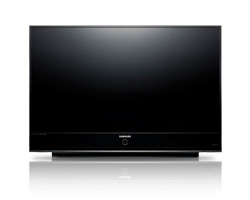
It looks like my Samsung HL-T6189S LED DLP TV runs embedded Linux! Cool.
I was looking through the firmware downloaded from Samsung’s web site for the set (to make sure 1019 was the latest firmware for the HL-T6189S) and found the following files inside of the archive:
- run.sh : a shell script
- rc.local : a script ran during startup of many versions of Linux and Unix
- Many .so and .ko files which are shared object files (similar to DLLs) and kernel modules (similar to device drivers)
- Several .img files that appear to be compressed ROMFS file system images (compressed file system images)
Fascinating! Too bad Samsung has announced they are not developing any new DLP sets. I wonder if their LCD displays also use Linux?
 Last week I spoke at
Last week I spoke at 

 I recently switched wumple.com’s boot partition to a RAID 1 array so I will be able to boot up even if the disk that had the original /boot partition failed. I generally followed the directions (with modifications for my setup and Fedora, and skipping unneeded parts) from the
I recently switched wumple.com’s boot partition to a RAID 1 array so I will be able to boot up even if the disk that had the original /boot partition failed. I generally followed the directions (with modifications for my setup and Fedora, and skipping unneeded parts) from the  I recently had a drive in my Linux software RAID 5 array begin to die. When I went to install the replacement, I could not find any straightforward instructions on how to put the new drive in the array, so I thought I’d toss what I did here in case others find it useful.
I recently had a drive in my Linux software RAID 5 array begin to die. When I went to install the replacement, I could not find any straightforward instructions on how to put the new drive in the array, so I thought I’d toss what I did here in case others find it useful.

